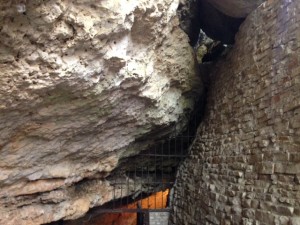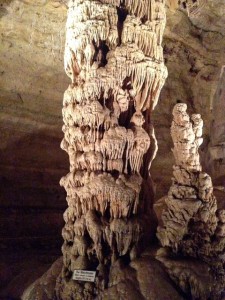Where does my blog take us this week? This past weekend I traveled to the Texas Hill Country, where I visited the Natural Bridge Cavern in San Antonio, Texas. So what does natural stone have to do with my recent weekend getaway?
One word: Limestone.
Just to refresh your memory, limestone is a calcareous stone, which means that it reacts (etches) when it comes in contact with acid, ammonia and alcohol. Limestone can appear to have a consistent color or there are certain limestones that contain small fossils. Limestone is a popular material for both residential and commercial properties today.
The name “Natural Bridge Cavern” comes from the 60-foot natural limestone slab, which is now a bridge that adorns the entrance of the cavern. This limestone bridge was formed after a sinkhole collapsed beneath it.
They call the cavern a “living” cave because of all the formations that are still growing even today. Inside the cavern the temperature is about 70 degrees Fahrenheit and it is exceedingly humid all year round. We traveled as deep as 180 feet in the cavern and our trip to this point was simply amazing, a feast for the eyes. So why is this a “living” cavern?
I am no geologist, so I will let Brian Vauter, Cave Geologist for Natural Bridge Caverns explain:
“…rainwater falls from the sky and seeps through the soil, it picks up carbon dioxide and makes carbonic acid. This slightly acidic water then seeps through the ground absorbing minerals like calcium carbonate along the way. Inside the cave, the mixture drips from the ceiling and the minerals in the water are left behind. Over hundreds of thousands of years they create the cave’s formations, including icicle-like stalactites on the ceiling and pillar-like stalagmites on the floor. The rate of growth varies, but currently it’s about one inch every 100 years.”
You cannot imagine how magnificent these stalactites and stalagmites look unless you actually see them in person. Many of them are enormous and stunning; the fact that they only grow one inch per year (or as our tour guide put it, the size of an ice cube), just shows how old these formations really are! It is truly amazing what water, limestone and time can create.



